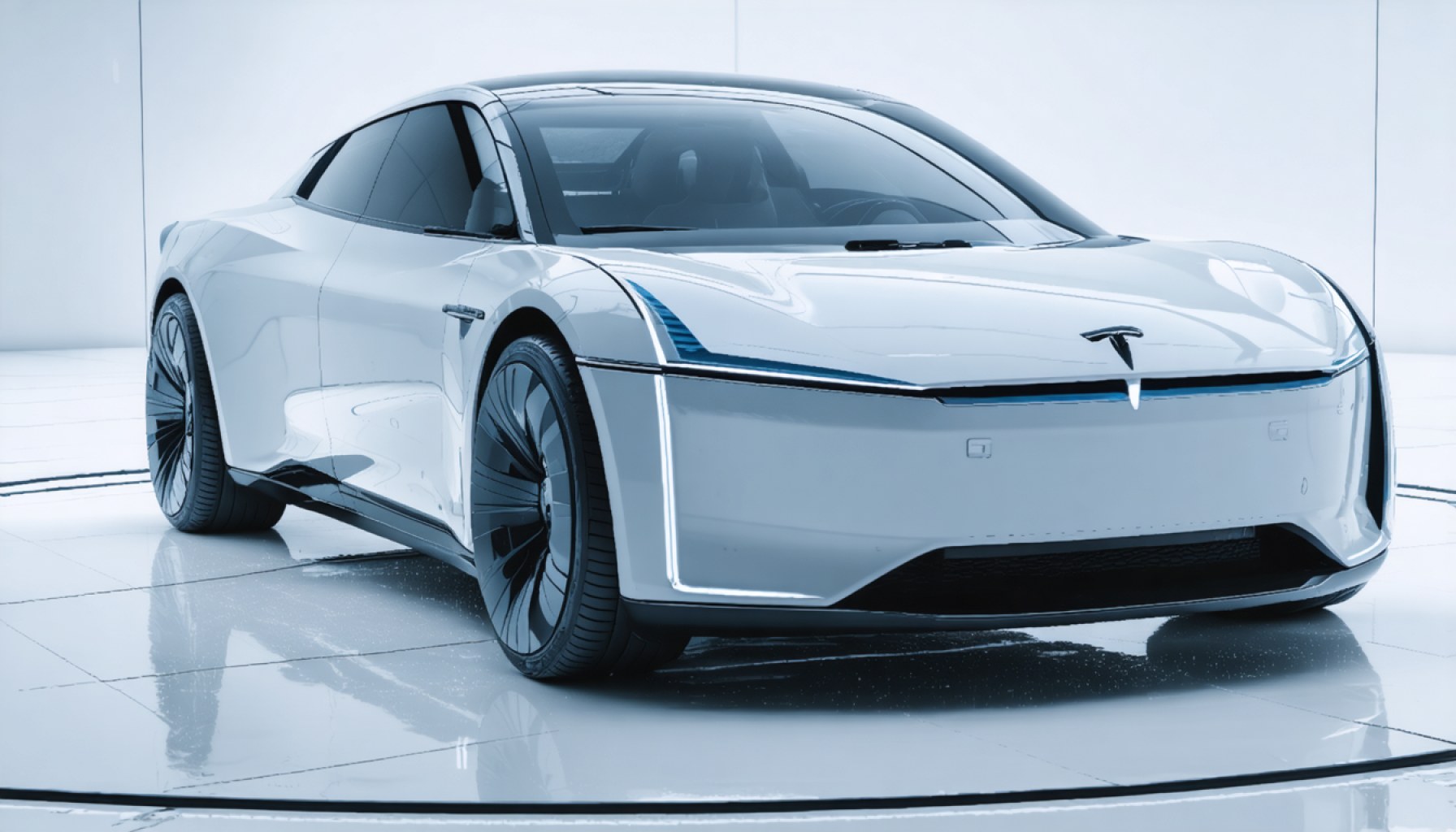- BYD surpasses Tesla as the world’s leading electric vehicle (EV) manufacturer, reflecting a significant shift in global automotive power dynamics.
- Originating as a battery maker, BYD exemplifies successful vertical integration, controlling key components and setting new industry benchmarks.
- BYD’s strategy focuses on affordability and innovation, appealing to the growing middle class in Asia and Latin America, despite obstacles such as U.S. trade tensions.
- Recent releases include rapid-charge models capable of recharging in five minutes, highlighting BYD’s commitment to technological advancement.
- With revenues exceeding $170 billion in 2024, BYD’s growth signifies China’s emergence as a significant export force in the automobile industry.
- Future challenges include adapting to American regulations barring Chinese-component cars by 2027, prompting a strategic pivot to other markets.
A shift in power ripples across the electric vehicle landscape—a relentless ascent by China’s automotive marvel, BYD, has seen it snatch the crown from Tesla, securing its place as the world’s preeminent EV manufacturer. From its humble origins as a battery maker in the sprawling cityscape of Shenzhen, BYD’s transformation encapsulates a seismic shift not just in automotive titans but in the global economic dynamics driven by technology and innovation.
Originating from a vision shaped by founder Wang Chuanfu, BYD (“Build Your Dreams”) has not only crafted a legacy but cemented China’s burgeoning role on the global industrial stage. With revenues soaring past $170 billion in 2024, the company has outpaced expectations and outmaneuvered rivals, showcasing a masterclass in vertical integration. Its prowess isn’t just limited to producing vehicles; BYD is a maestro of its own destiny, curating its batteries and controlling key components from source to showroom.
China, once a nation heavily reliant on foreign vehicles, is now a powerhouse of exports, fostering giants like BYD to shape the next generation of mobility. With the unveiling of its rapid-charge models, BYD announced to the world that it’s not just keeping pace—it’s accelerating towards the future, offering cars capable of a full recharge in a mere five minutes and covering distances that stretch beyond the capabilities of today’s most advanced vehicles.
The stark contrasts couldn’t be more pronounced: while Tesla grapples with tightening sales, BYD’s strategy of affordability and innovation has carved a unique niche. The company’s vehicles are not mere products but promises of enhanced lifestyles at attainable prices, particularly resonating with a burgeoning middle class across Asia and Latin America.
However, BYD’s journey is not without obstacles. Trade tensions, particularly with the U.S., cast long shadows over its ambitions in the Western hemisphere. With upcoming regulations set to bar Chinese-component cars from American roads by 2027, BYD’s gaze naturally veers elsewhere, eyeing markets where electric adoption is biding its time to bloom.
In essence, BYD’s narrative isn’t solely about toppling a titan, nor solely a tale of relentless ambition. It’s an allegory of adaptation, as an enterprise leverages its craftsmanship and heritage to chart new territories and redefine the contours of the global car market. This ascent is a testament to the triumph of innovative foresight and strategic agility, underscoring that the automotive race is not just about speed, but about the endurance to sustainably drive into the heart of tomorrow’s possibilities.
Unveiling the Titan: How BYD Revolutionized the Electric Vehicle Market
Breaking Down BYD’s Rise to the Top
The story of BYD is a powerful illustration of how strategic vision and resilience can reshape industries. Let’s explore some additional insights about BYD’s extraordinary journey and the evolving landscape of electric vehicles (EVs).
Real-World Use Cases: Leading the EV Revolution
1. Urban Mobility Solutions: BYD’s electric buses and taxis are transforming public transportation. Cities like Shenzhen have largely adopted electric buses, improving urban air quality and reducing carbon footprints.
2. Affordable EVs for Emerging Markets: By offering cost-effective and reliable electric vehicles, BYD is tapping into the growing demand in markets such as India, Brazil, and regions across Africa where traditional automobile ownership barriers exist.
3. Battery Innovator: Initially a battery manufacturer, BYD has leveraged its expertise to produce cutting-edge batteries that power their vehicles and provide energy storage solutions, further aligning with global sustainability goals.
Market Forecasts & Industry Trends
– Global EV Market Growth: The global EV market is expected to exceed $800 billion by 2030, with BYD capturing significant shares in Asia and expanding in Europe and Latin America.
– Technological Advancement: Rapid-charging batteries and extended range are becoming critical features in consumer decision-making, areas where BYD leads.
Reviews & Comparisons: BYD vs. Tesla
Pros of BYD:
– Vertical Integration: By producing batteries in-house, BYD ensures cost efficiency and quality control.
– Aggressive Pricing Strategy: Affordable, high-quality vehicles make EVs accessible to a wider audience.
– Diverse Product Range: From consumer cars to buses and trucks, BYD serves multiple market segments.
Cons of Tesla:
– Price Points: Generally positioned as a premium brand, Tesla’s vehicles aren’t as accessible to the budget-conscious segment.
– Market Volatility: Tesla’s reliance on a limited number of high-performance models can lead to fluctuations in market share if consumer preferences shift.
Controversies & Limitations
– Regulatory Challenges: BYD faces potential market restrictions due to geopolitical trade tensions, especially in the U.S.
– Intense Competition: While BYD leads in China, rising competition from new entrants and established brands like Volkswagen and Hyundai challenge its dominance.
How-To Steps: Owning a BYD EV
1. Research Models: Identify the model that fits your needs, from compact cars to SUVs.
2. Financial Considerations: Explore subsidies, incentives, and financing options available for EVs in your country.
3. Understand Charging Requirements: Familiarize yourself with charging infrastructure availability and potential costs.
Insights & Predictions
BYD’s focus on affordability and innovation positions it to expand rapidly in emerging markets where EV infrastructure is still developing. As battery technology continues to evolve, expect more efficient, longer-range vehicles from BYD and its competitors.
Actionable Recommendations
– Embrace EV Ownership: Consumers can reduce their environmental impact by switching to electric vehicles, with manufacturers like BYD offering solutions for various budgets.
– Stay Informed: Keep abreast of regulatory changes, especially if considering BYD vehicles in markets with stringent entry conditions.
For more detailed industry insights and to explore products, visit the official BYD website.
In conclusion, BYD’s journey from a battery maker to a global EV leader exemplifies the transformative power of innovation and strategic expansion. As markets continue to evolve, keeping informed and adaptable will be key for consumers and businesses alike navigating the dynamic world of electric vehicles.









